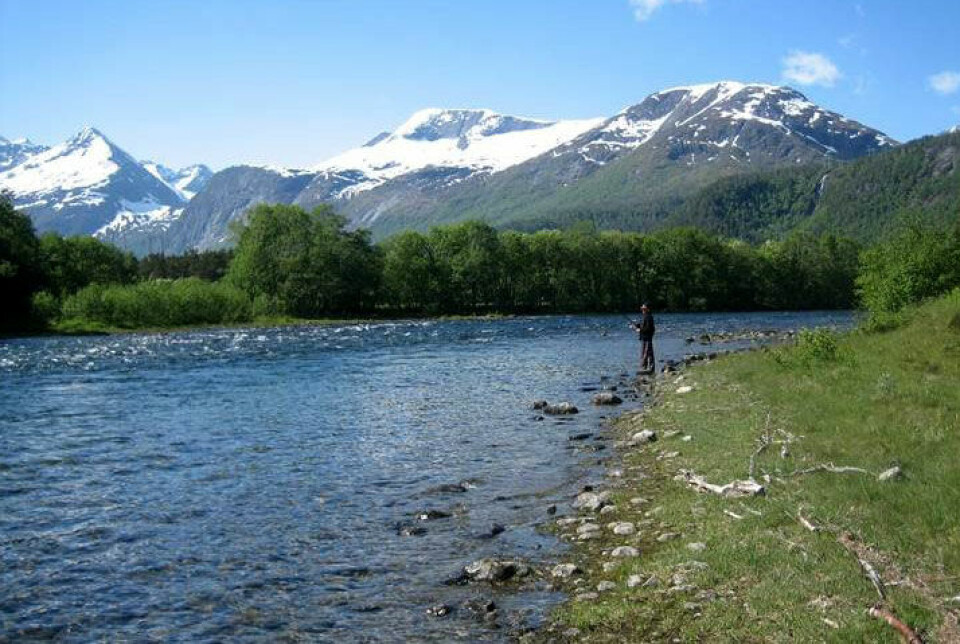THIS ARTICLE/PRESS RELEASE IS PAID FOR AND PRESENTED BY NINA - Norwegian Institute for Nature Research - read more

Hydropower development altered the genes of salmon
Researchers have documented man-made evolution in a natural salmon population.
Barely a century ago, the river Eira, which flows into the innermost part of Romsdalsfjorden in Norway, was famous for its large salmon. The average Eira salmon at that time was 12 kilograms, and catching a 20 kg salmon was not uncommon.
Today, the average salmon in the river Eira is four kilograms. In other words, the size of salmon has reduced to a third over a few decades.
What happened to the large salmon in the Eira river?
Ingerid Julie Hagen is one of the scientists who pondered this very question. With the help of genetic analyses, long time series and statistical models, Hagen and her colleagues found the explanation - and documented human-induced evolution in a natural population.
“We found that the reduction in mass is an evolutionary response to reduced waterflow. Like many other salmon rivers, the Eira is affected by hydroelectric power production. In just a few generations, the salmon have adapted to the low waterflow and no longer grow as large,” Hagen says.
Less water, smaller salmon
The waterflow in the Eira gradually reduced due to three different hydropower developments. By comparing waterflow and salmon size in the same period, a pattern clearly emerges; the size of the salmon has decreased in step with the amount of water.
Populations of Atlantic salmon are adapted to the environment in their natal river.
In large rivers with much water, it is an advantage to be large. In small rivers with little water, the opposite is true.
“A likely scenario in the river Eira is that large fish simply did not enter their spawning grounds, and were therefore not able to reproduce to the same extent as before,” Hagen says.

What caused the change?
The scientists investigated whether the reduction in body mass was a genetic response to the altered waterflow in river Eira, environmental changes in the ocean, in addition to a set of other potential underlying causes.
Recently, scientists discovered two genes of great importance for sexual maturation and body size of salmon: vgll3 and six6.
Did evolution of these genes cause the decrease in size of the Eira salmon?

The answer lies in the genes
“We found that the puberty genes have been subjected to strong selection. While the large salmon variant of the gene was the dominant variant prior to the hydropower development, the small salmon variant is dominant today. With the small salmon variant being more frequent, the salmon in river Eira are more likely to mature at a younger age and therefore also at a smaller size. Changes in the two genes could explain 84 per cent of the observed body mass reduction in the Eira salmon,” Hagen says.
This study is a clear example of why genetic variation is important for the resilience of populations to environmental change; if the Eira salmon did not have the genetic variation for early sexual maturation, it would not have been able to adapt to the altered waterflow regime.
Reference:
Jensen et al. Large-effect loci mediate rapid adaptation of salmon body size after river regulation, PNAS, 2022. DOI: 10.1073/pnas.2207634119
———
Read the Norwegian version of this article at forskning.no

This article/press release is paid for and presented by NINA - Norwegian Institute for Nature Research
This content is created by NINA's communication staff, who use this platform to communicate science and share results from research with the public. NINA is one of more than 80 owners of ScienceNorway.no. Read more here.
See more content from NINA:
-
How will climate change affect lakes worldwide?
-
White-tailed sea eagles are breeding in Ireland again after more than a century
-
Could a tunnel help wild reindeer in Norway?
-
Norwegian white-tailed sea eagles are helping to rebuild a lost population in Ireland
-
1 in 4 freshwater species are at risk of extinction: "It's not too late to take action"
-
Insects prefer cold winters with lots of snow




































